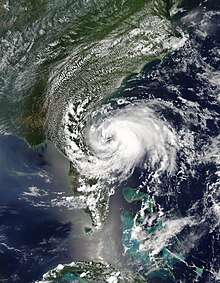Well it dropped to 32.2 degrees earlier this.morning, which is the 3rd freeze measured here this week at my locale. Also had more scattered frost this morning. We had enough radiational cooling to drop to the freeze mark, despite the canopy of very high level cirrus clouds moving in overhead on the Subtropical Jet.
The Cold High Pressure axis, which had been parked right over North Florida and Southern GA region, will begin to shift east off the SE U.S. coast by early tomorrow. The first of two shortwaves will develop and move across Ths area during the day tomorrow. Could see rainfall totals in a few spots reaching 1-2 inches over the northern peninsula on Friday. A. Low Pressure area will begin to develop and deepen off the coast of the Carolinas late Friday and move northeast. There is no cold air downstream behind this particular system, so temps will be near climo levels here with minimums in the mid-upper 40s on Saturday morning and max temps in the upper 60s in the wake of the first departing Low Pressure.
The second shortwave will move in very quickly from out of the GOM during Sunday into Sunday night. More rain will move in across the peninsula. A stronger, Polar High Pressure will.drop down into the Plains by Monday, and build down south and east, which will funnel colder air back into the Deep South and into North Florida on Monday. Models projecting upper 20s - lower 30s for northern peninsula for Tuesday morning. Central Florida is looking at mainly 40-45 degrees, especially with high clouds probably still overhead with the STJ keeping temps up there, and mainly 50s across South Florida on Tuesday morning.
In the long range, the models have backed off on the potential of phasing the polar and sub'tropical jets. Earlier, the GFS in particular, was painting a potential of a phasing scenario, with the development of a winter storm over the Deep South Jan 21-23. However, that idea was quickly dropped (no surprise uh)

So the split flow pattern looks to remain very progressive the remainder of January. The current -AO will ensure that the polar jet will dive down into the CONUS to bring down frequent shots of cold air. There is just enough of a positive PNA to allow these transient cold shots to dive down into the SE U.S. to give the region and North Florida to receive freezes. But, these cold shots will be around only a couple of days when they occur. Meanwhile, the subtropical jet looks to remain very active in the extended outlook as well, as these storm systems will contnue to impact Texas, the GOM and Florida, very typical of El Nino.
The NAO I think is only in a slight negative phase at tbis point. The NAO has to really tank negative to allow really cold air to get locked into place across Eastern North America and down into Florida. At this point, this has yet to happen and if the NAO does not turn sharply negative by mid-February, the peninsula will get through another winter season relatively warm. Well, this El Nino this season has already assured this Fall/Winter 2015-16 season as one of the warmest we have seen on record anyway.
Have a great day everyone!












